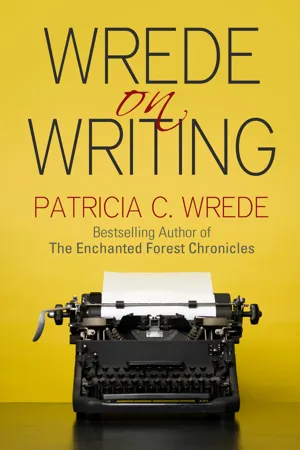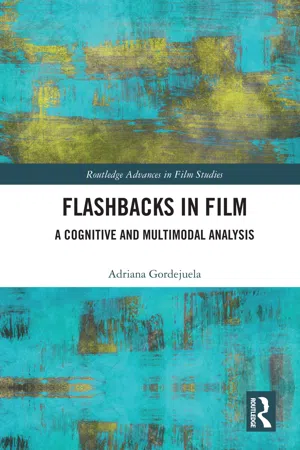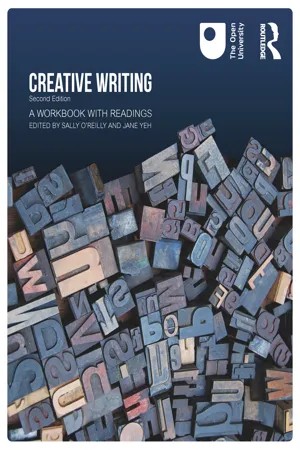Literature
Flashback
A flashback in literature is a narrative device that interrupts the present action to depict a scene from the past. It provides background information, adds depth to characters, and helps readers understand the story's development. Flashbacks are often used to reveal crucial details, create suspense, or offer insight into a character's motivations.
Written by Perlego with AI-assistance
Related key terms
1 of 5
3 Key excerpts on "Flashback"
- eBook - ePub
- Patricia C. Wrede(Author)
- 2019(Publication Date)
- Diversion Books(Publisher)
External consistency is also important in fantasy, but for a different reason: most experienced fantasy readers will assume that any inconsistencies between the real world and the background in a piece of fantasy fiction are deliberate, conscious choices that the author has made and therefore clues both to the type of fantasy and to the way the author’s particular fantasy world works. If the writer pays no attention at all to “real things” (like the way guns work or how far a horse can travel in a day), accidental mistakes can result in book-meets-wall moments.Looking Backward I
There are two important things to know about Flashbacks: how to do them, and when to do them. Both things can be trickier to figure out than they look.First, a definition: as far as I’m concerned, Flashbacks are a way of conveying some background/backstory information as if it were happening “now.” The central story that is being told or the central problem to be resolved is in the story-present, and the Flashback is usually just an illuminating scene or memory from the past. When an author is playing around with the temporal structure of a story—alternating chapters set in 2010 with chapters set in 1810, for instance—that, to me, falls under “structure,” rather than “Flashback.” Feel free to disagree on this; the terminology of writing is not standardized.Flashbacks are one of several storytelling techniques that periodically get overused and abused. It’s easy to see why—they’re a tremendously useful way of getting background/backstory across without using infodumps or as-you-know-Bob/maid-and-butler dialogue…especially when the writer has begun in medias res - eBook - ePub
Flashbacks in Film
A Cognitive and Multimodal Analysis
- Adriana Gordejuela(Author)
- 2021(Publication Date)
- Routledge(Publisher)
And so, Turim argues (1989, p. 3), “[t]his combination of brief instances of light, of explosive power, and of the change in direction and quality of a glance are appropriate antecedents to the term Flashback in its cinematic sense”. These specific meanings of the form flash may be the reason why film preferred the term Flashback over analepsis, since in some way it refers to the speed with which film editing introduces temporal and spatial leaps to the past in the story. Later on, when the term Flashback was consolidated in the cinematic field, it started to be used in literary studies as well, as a synonym for analepsis (Turim, 1989, p. 4). The current definition of Flashback in the OED (Flashback, n.d.) reflects this expansion in the use of the term: a Flashback is “[a] scene in a film, novel, etc. set in a time earlier than the main story”. However, even though the cinematographic origin of the word is not usually mentioned, and although film Flashbacks do not normally take the form of mental flashes (as will be discussed later, they are often introduced by marked transitions and in a slow and smooth way), the term Flashback still “marks a recognition that something particularly transformative and jarring occurred in [early] cinema’s montage of disparate temporalities in disjunct order” (Turim, 1989, p. 4). Moreover, the cinematic concept of Flashback has spread out to other fields such as psychology, in which it refers to the mental images that come up to someone as a result of trauma or drug use (Turim, 1989, p. 5). 2.1.2 Story, discourse, and time When talking about storytelling, whether cinematic, literary, or of some other kind, there are two essential concepts that have been much discussed: story and narrative discourse (Abbott, 2007, p - eBook - ePub
Creative Writing
A Workbook with Readings
- Jane Yeh, Sally O'Reilly, Jane Yeh, Sally O'Reilly(Authors)
- 2022(Publication Date)
- Routledge(Publisher)
Reading 7.7 ) could be seen as a story structured around Flashbacks.A novel can generally handle Flashbacks more comfortably (though misjudgements are possible in novels too). For short stories, Flashbacks will generally be more constricted and focused. If you find that you are including a lot of Flashbacks or descriptive backstory, revisit your starting point and your timeframe. Starting at a different time and place in the history of events is quite a common solution to time issues.7 Repetition and escalation
Figure 3 The poet and short story writer Jacob Ross (photo: Roberto Ricciuti/Getty Images) .The use of repeated images, actions or other elements – repetition – is a common structural tool that can help reinforce the dramatic action. The name of the snake near the start of the narrative in ‘Tomorrow is Too Far’ reappears twice towards the end of the story. Similarly, Darwin the dog in ‘Moonlight’ appears twice: in the opening, where the narrator reveals he only barks at strangers, then in a revealing line from the mother, ‘the dog never barked’. Similarly, the grandmother features at the start and at the end to frame the story, and breakfast recurs in the story. Such habitual elements are structurally useful. Stories can be built using the scaffolding of the daily plane flying overhead, or the weekly trip to the supermarket, the day-to-day work routine or, as with the Adichie story, the annual summer trips to stay with a Nigerian grandmother.In ‘I Could See the Smallest Things’, Cliff’s breathing features in the opening passage and again at the end. The slugs appear in the middle of the story, and again at the end. Repeated elements help reinforce plot and characterisation, allowing readers to make more lateral connections within the story. If a dog is introduced early on, then reappears at the end, this will be noted by attentive readers. Repetitions can add poetic echoes but also emphasise a plot point. If overused the echoes might seem implausible, the writing can seem schematised. The craft lies in using such tactics judiciously.
Index pages curate the most relevant extracts from our library of academic textbooks. They’ve been created using an in-house natural language model (NLM), each adding context and meaning to key research topics.


